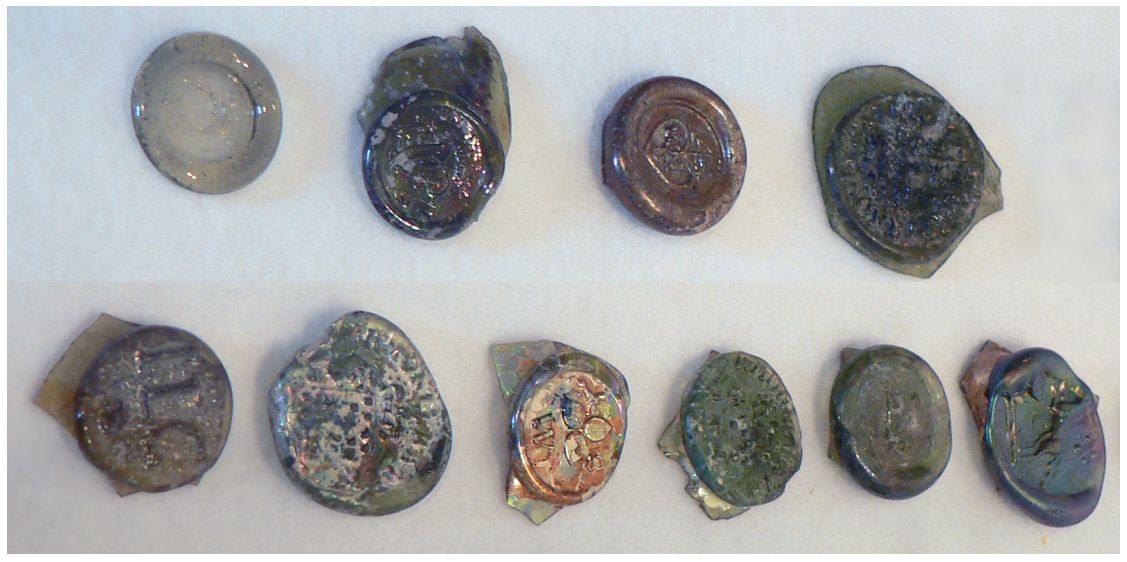For a long time, wine was marketed in barrels and only the final seller or consumer put it into keline containers. With the advent of glass bottles from the middle of the 17th century onwards, it also became common practice to melt a glass seal. On the seal the glassworks or the respective manufacturer, the bottle size and sometimes also the nominal volume were mentioned. The latter was intended to prevent bar fraud through bottles that were too small. In the glassworks in Holzen (Holzminden, Lower Saxony), which existed from 1744 to 1768, bottles with glass seals were produced. Numerous glass seals were recovered during excavations at the former factory. Among them were motifs with a lion, a jumping horse, a stag, with three leaves or monograms, such as the letters "W" and "C" for Carl. I., who as duke had initiated the foundation of the glassworks. These bottles were mainly used by the nobility and the upper middle classes, as well as by inns and innkeepers. See also under bottles and wine vessels.

From photo: Axel Hindemith / , CC BY 3.0, Link
Voices of our members

wein.plus is a handy, efficient guide to a quick overview of the colourful world of wines, winegrowers and grape varieties. In Wine lexicon, the most comprehensive of its kind in the world, you will find around 26,000 keywords on the subject of grape varieties, wineries, wine-growing regions and much more.
Roman Horvath MW
Domäne Wachau (Wachau)